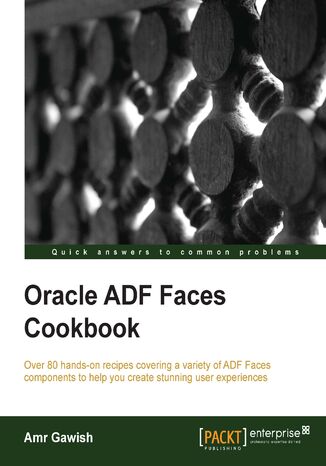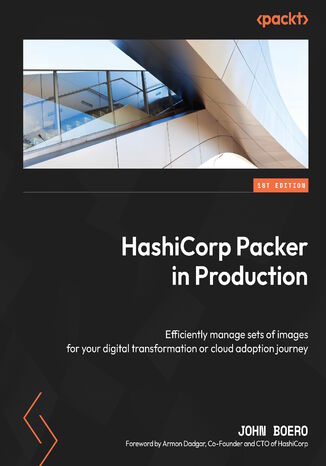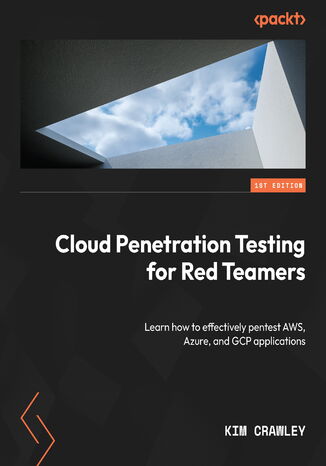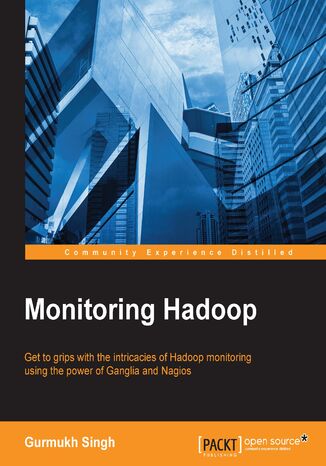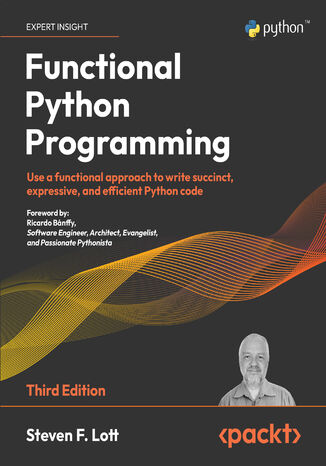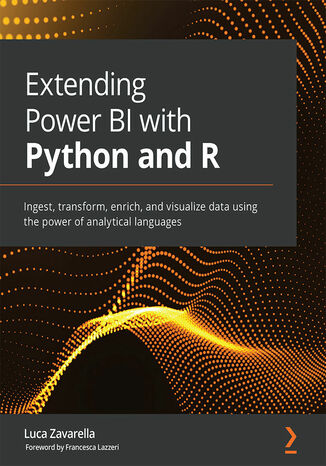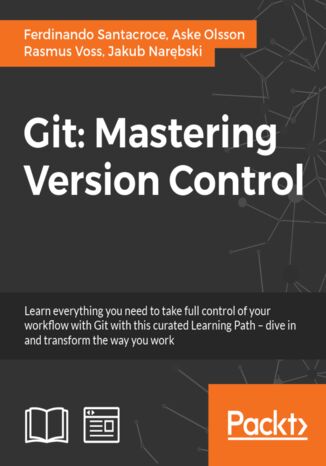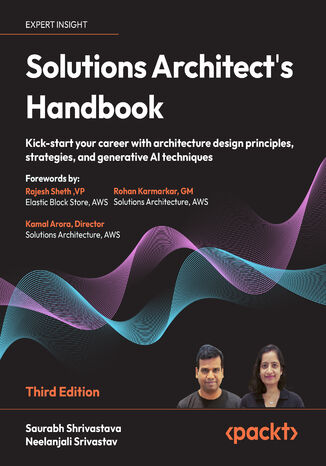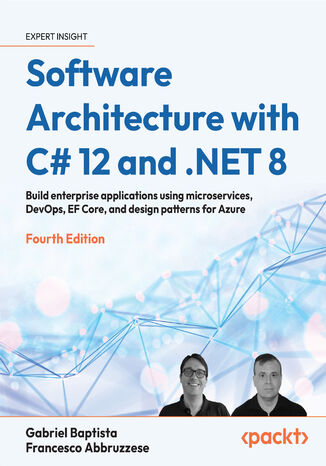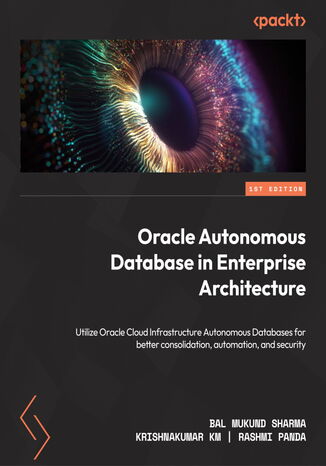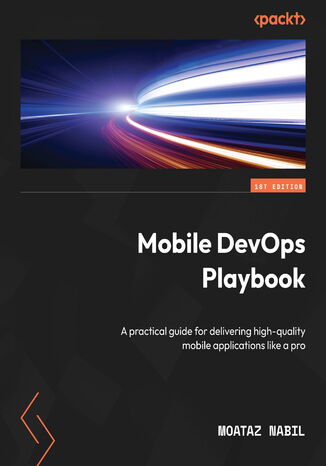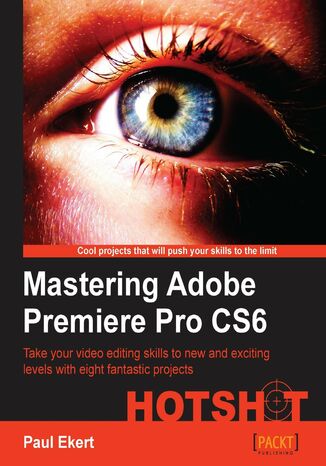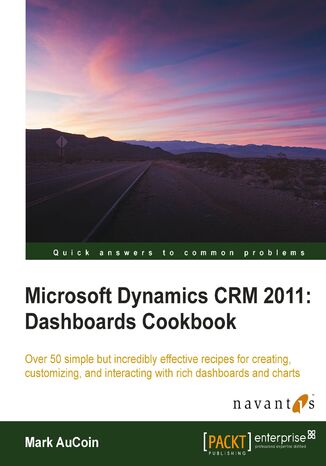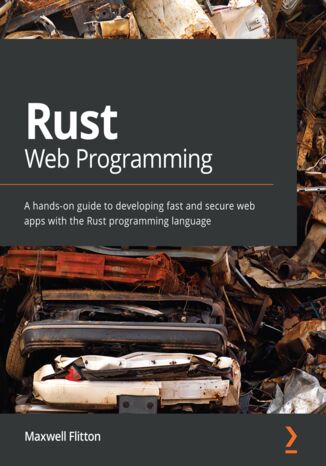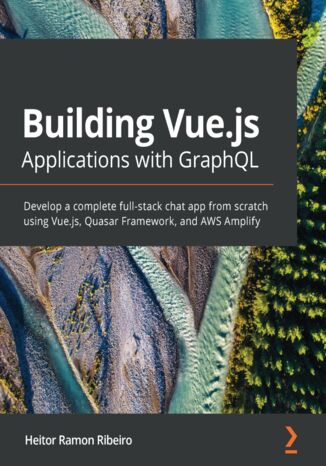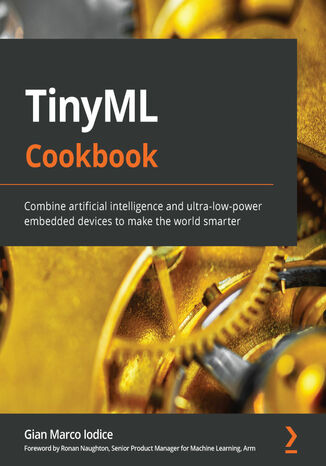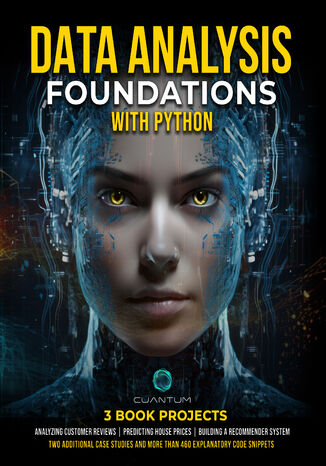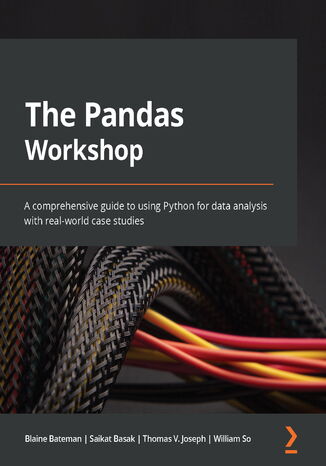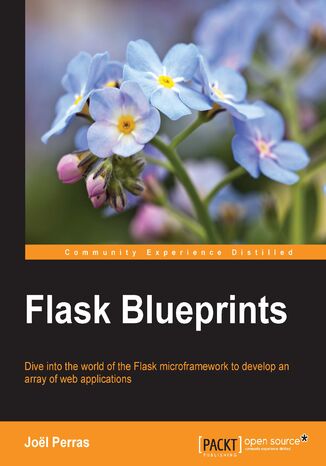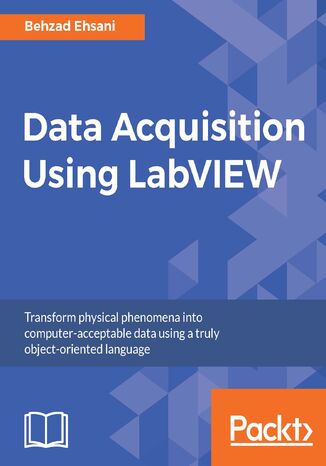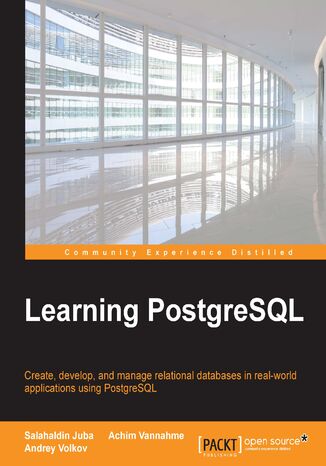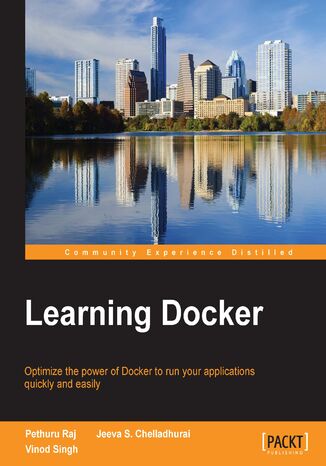Categories
Ebooks
-
Business and economy
- Bitcoin
- Businesswoman
- Coaching
- Controlling
- E-business
- Economy
- Finances
- Stocks and investments
- Personal competence
- Computer in the office
- Communication and negotiation
- Small company
- Marketing
- Motivation
- Multimedia trainings
- Real estate
- Persuasion and NLP
- Taxes
- Social policy
- Guides
- Presentations
- Leadership
- Public Relation
- Reports, analyses
- Secret
- Social Media
- Sales
- Start-up
- Your career
- Management
- Project management
- Human Resources
-
For children
-
For youth
-
Education
-
Encyclopedias, dictionaries
-
E-press
- Architektura i wnętrza
- Health and Safety
- Biznes i Ekonomia
- Home and garden
- E-business
- Ekonomia i finanse
- Esoterecism
- Finances
- Personal finance
- Business
- Photography
- Computer science
- HR & Payroll
- For women
- Computers, Excel
- Accounts
- Culture and literature
- Scientific and academic
- Environmental protection
- Opinion-forming
- Education
- Taxes
- Travelling
- Psychology
- Religion
- Agriculture
- Book and press market
- Transport and Spedition
- Healthand beauty
-
History
-
Computer science
- Office applications
- Data bases
- Bioinformatics
- IT business
- CAD/CAM
- Digital Lifestyle
- DTP
- Electronics
- Digital photography
- Computer graphics
- Games
- Hacking
- Hardware
- IT w ekonomii
- Scientific software package
- School textbooks
- Computer basics
- Programming
- Mobile programming
- Internet servers
- Computer networks
- Start-up
- Operational systems
- Artificial intelligence
- Technology for children
- Webmastering
-
Other
-
Foreign languages
-
Culture and art
-
School reading books
-
Literature
- Antology
- Ballade
- Biographies and autobiographies
- For adults
- Dramas
- Diaries, memoirs, letters
- Epic, epopee
- Essay
- Fantasy and science fiction
- Feuilletons
- Work of fiction
- Humour and satire
- Other
- Classical
- Crime fiction
- Non-fiction
- Fiction
- Mity i legendy
- Nobelists
- Novellas
- Moral
- Okultyzm i magia
- Short stories
- Memoirs
- Travelling
- Narrative poetry
- Poetry
- Politics
- Popular science
- Novel
- Historical novel
- Prose
- Adventure
- Journalism, publicism
- Reportage novels
- Romans i literatura obyczajowa
- Sensational
- Thriller, Horror
- Interviews and memoirs
-
Natural sciences
-
Social sciences
-
School textbooks
-
Popular science and academic
- Archeology
- Bibliotekoznawstwo
- Cinema studies
- Philology
- Polish philology
- Philosophy
- Finanse i bankowość
- Geography
- Economy
- Trade. World economy
- History and archeology
- History of art and architecture
- Cultural studies
- Linguistics
- Literary studies
- Logistics
- Maths
- Medicine
- Humanities
- Pedagogy
- Educational aids
- Popular science
- Other
- Psychology
- Sociology
- Theatre studies
- Theology
- Economic theories and teachings
- Transport i spedycja
- Physical education
- Zarządzanie i marketing
-
Guides
-
Game guides
-
Professional and specialist guides
-
Law
- Health and Safety
- History
- Road Code. Driving license
- Law studies
- Healthcare
- General. Compendium of knowledge
- Academic textbooks
- Other
- Construction and local law
- Civil law
- Financial law
- Economic law
- Economic and trade law
- Criminal law
- Criminal law. Criminal offenses. Criminology
- International law
- International law
- Health care law
- Educational law
- Tax law
- Labor and social security law
- Public, constitutional and administrative law
- Family and Guardianship Code
- agricultural law
- Social law, labour law
- European Union law
- Industry
- Agricultural and environmental
- Dictionaries and encyclopedia
- Public procurement
- Management
-
Tourist guides and travel
- Africa
- Albums
- Southern America
- North and Central America
- Australia, New Zealand, Oceania
- Austria
- Asia
- Balkans
- Middle East
- Bulgary
- China
- Croatia
- The Czech Republic
- Denmark
- Egipt
- Estonia
- Europe
- France
- Mountains
- Greece
- Spain
- Holand
- Iceland
- Lithuania
- Latvia
- Mapy, Plany miast, Atlasy
- Mini travel guides
- Germany
- Norway
- Active travelling
- Poland
- Portugal
- Other
- Przewodniki po hotelach i restauracjach
- Russia
- Romania
- Slovakia
- Slovenia
- Switzerland
- Sweden
- World
- Turkey
- Ukraine
- Hungary
- Great Britain
- Italy
-
Psychology
- Philosophy of life
- Kompetencje psychospołeczne
- Interpersonal communication
- Mindfulness
- General
- Persuasion and NLP
- Academic psychology
- Psychology of soul and mind
- Work psychology
- Relacje i związki
- Parenting and children psychology
- Problem solving
- Intellectual growth
- Secret
- Sexapeal
- Seduction
- Appearance and image
- Philosophy of life
-
Religion
-
Sport, fitness, diets
-
Technology and mechanics
Audiobooks
-
Business and economy
- Bitcoin
- Businesswoman
- Coaching
- Controlling
- E-business
- Economy
- Finances
- Stocks and investments
- Personal competence
- Communication and negotiation
- Small company
- Marketing
- Motivation
- Real estate
- Persuasion and NLP
- Taxes
- Social policy
- Guides
- Presentations
- Leadership
- Public Relation
- Secret
- Social Media
- Sales
- Start-up
- Your career
- Management
- Project management
- Human Resources
-
For children
-
For youth
-
Education
-
Encyclopedias, dictionaries
-
E-press
-
History
-
Computer science
-
Other
-
Foreign languages
-
Culture and art
-
School reading books
-
Literature
- Antology
- Ballade
- Biographies and autobiographies
- For adults
- Dramas
- Diaries, memoirs, letters
- Epic, epopee
- Essay
- Fantasy and science fiction
- Feuilletons
- Work of fiction
- Humour and satire
- Other
- Classical
- Crime fiction
- Non-fiction
- Fiction
- Mity i legendy
- Nobelists
- Novellas
- Moral
- Okultyzm i magia
- Short stories
- Memoirs
- Travelling
- Poetry
- Politics
- Popular science
- Novel
- Historical novel
- Prose
- Adventure
- Journalism, publicism
- Reportage novels
- Romans i literatura obyczajowa
- Sensational
- Thriller, Horror
- Interviews and memoirs
-
Natural sciences
-
Social sciences
-
Popular science and academic
-
Guides
-
Professional and specialist guides
-
Law
-
Tourist guides and travel
-
Psychology
- Philosophy of life
- Interpersonal communication
- Mindfulness
- General
- Persuasion and NLP
- Academic psychology
- Psychology of soul and mind
- Work psychology
- Relacje i związki
- Parenting and children psychology
- Problem solving
- Intellectual growth
- Secret
- Sexapeal
- Seduction
- Appearance and image
- Philosophy of life
-
Religion
-
Sport, fitness, diets
-
Technology and mechanics
Videocourses
-
Data bases
-
Big Data
-
Biznes, ekonomia i marketing
-
Cybersecurity
-
Data Science
-
DevOps
-
For children
-
Electronics
-
Graphics/Video/CAX
-
Games
-
Microsoft Office
-
Development tools
-
Programming
-
Personal growth
-
Computer networks
-
Operational systems
-
Software testing
-
Mobile devices
-
UX/UI
-
Web development
-
Management
Podcasts
Creating machine images can be time-consuming and error-prone when done manually. HashiCorp Packer enables you to automate this process by defining the configuration in a simple, declarative syntax. This configuration is then used to create machine images for multiple environments and cloud providers.The book begins by showing you how to create your first manifest while helping you understand the available components. You’ll then configure the most common built-in builder options for Packer and use runtime provisioners to reconfigure a source image for desired tasks. You’ll also learn how to control logging for troubleshooting errors in complex builds and explore monitoring options for multiple logs at once. As you advance, you’ll build on your initial manifest for a local application that’ll easily migrate to another builder or cloud. The chapters also help you get to grips with basic container image options in different formats while scaling large builds in production. Finally, you’ll develop a life cycle and retention policy for images, automate packer builds, and protect your production environment from nefarious plugins.By the end of this book, you’ll be equipped to smoothen collaboration and reduce the risk of errors by creating machine images consistently and automatically based on your defined configuration.
Cloud Penetration Testing. Learn how to effectively pentest AWS, Azure, and GCP applications
With AWS, Azure, and GCP gaining prominence, understanding their unique features, ecosystems, and penetration testing protocols has become an indispensable skill, which is precisely what this pentesting guide for cloud platforms will help you achieve. As you navigate through the chapters, you’ll explore the intricacies of cloud security testing and gain valuable insights into how pentesters evaluate cloud environments effectively.In addition to its coverage of these cloud platforms, the book also guides you through modern methodologies for testing containerization technologies such as Docker and Kubernetes, which are fast becoming staples in the cloud ecosystem. Additionally, it places extended focus on penetration testing AWS, Azure, and GCP through serverless applications and specialized tools. These sections will equip you with the tactics and tools necessary to exploit vulnerabilities specific to serverless architecture, thus providing a more rounded skill set.By the end of this cloud security book, you’ll not only have a comprehensive understanding of the standard approaches to cloud penetration testing but will also be proficient in identifying and mitigating vulnerabilities that are unique to cloud environments.
Steven F. Lott, Ricardo Bánffy
Not enough developers understand the benefits of functional programming, or even what it is. Author Steven Lott demystifies the approach, teaching you how to improve the way you code in Python and make gains in memory use and performance.Starting from the fundamentals, this book shows you how to apply functional thinking and techniques in a range of scenarios, with examples centered around data cleaning and exploratory data analysis. You’ll learn how to use generator expressions, list comprehensions, and decorators to your advantage. You don’t have to abandon object-oriented design completely, though – you’ll also see how Python’s native object-orientation is used in conjunction with functional programming techniques.By the end of this book, you’ll be well versed in the essential functional programming features of Python, and understand why and when functional thinking helps. You’ll also have all the tools you need to pursue any additional functional topics that are not part of the Python language.
Luca Zavarella, Francesca Lazzeri
Python and R allow you to extend Power BI capabilities to simplify ingestion and transformation activities, enhance dashboards, and highlight insights. With this book, you'll be able to make your artifacts far more interesting and rich in insights using analytical languages.You'll start by learning how to configure your Power BI environment to use your Python and R scripts. The book then explores data ingestion and data transformation extensions, and advances to focus on data augmentation and data visualization. You'll understand how to import data from external sources and transform them using complex algorithms. The book helps you implement personal data de-identification methods such as pseudonymization, anonymization, and masking in Power BI. You'll be able to call external APIs to enrich your data much more quickly using Python programming and R programming. Later, you'll learn advanced Python and R techniques to perform in-depth analysis and extract valuable information using statistics and machine learning. You'll also understand the main statistical features of datasets by plotting multiple visual graphs in the process of creating a machine learning model.By the end of this book, you’ll be able to enrich your Power BI data models and visualizations using complex algorithms in Python and R.
Git: Mastering Version Control
Aske Olsson, Jakub Narębski, Ferdinando Santacroce, Rasmus Voss
Git is one of the most popular types of Distributed Version Control System. Since its inception, it has attracted skilled developers due to its robust, powerful, and reliable features. Like most powerful tools, Git can be hard to approach for the newcomers. However, this learning path will help you overcome this fear and become adept at all the basic and advanced tasks in Git. This course starts with an introduction to version control systems before you delve deeply into the essentials of Git. This serves as a primer for the topics to follow such as branching and merging, creating and managing a GitHub personal repository, and fork and pull requests. You'll also learn how to migrate from SVN using Git tools or TortoiseGit and migrate from other VCSs, concluding with a collection of resources, links, and appendices.As you progress on to the next module, you will learn how you can automate the usual Git processes by utilizing the hook system built into Git. It also covers advanced repository management, including different options to rewrite the history of a Git repository before you discover how you can work offline with Git, how to track what is going on behind the scenes, and how to use the stash for different purposes.Moving forward, you will gain deeper insights into Git's architecture, its underlying concepts, behavior, and best practices. It gives a quick implementation example of using Git for a collaborative development of a sample project to establish the foundation knowledge of Git operational tasks and concepts. By exploring advanced Git practices, you will attain a deeper understanding of Git’s behavior, allowing you to customize and extend existing recipes and write your own.This Learning Path is a blend of content, all packaged up keeping your journey in mind. It includes content from the following Packt products:• Git Essentials, Ferdinando Santacroce• Git Version Control Cookbook, Aske Olsson and Rasmus Voss• Mastering Git, Jakub Nar?bski
RxJS is a fast, reliable, and compact library for handling asynchronous and event-based programs. It is a first-class citizen in Angular and enables web developers to enhance application performance, code quality, and user experience, so using reactive patterns in your Angular web development projects can improve user interaction on your apps, which will significantly improve the ROI of your applications.This book is a step-by-step guide to learning everything about RxJS and reactivity. You'll begin by understanding the importance of the reactive paradigm and the new features of RxJS 7. Next, you'll discover various reactive patterns, based on real-world use cases, for managing your application’s data efficiently and implementing common features using the fewest lines of code.As you build a complete application progressively throughout the book, you'll learn how to handle your app data reactively and explore different patterns that enhance the user experience and code quality, while also improving the maintainability of Angular apps and the developer's productivity. Finally, you'll test your asynchronous streams and enhance the performance and quality of your applications by following best practices.By the end of this RxJS Angular book, you'll be able to develop Angular applications by implementing reactive patterns.
Saurabh Shrivastava, Neelanjali Srivastav, Rajesh Sheth, Kamal Arora, ...
Build a strong foundation in solution architecture and excel in your career with the Solutions Architect’s Handbook. Authored by seasoned AWS technology leaders Saurabh Shrivastav and Neelanjali Srivastav, this book goes beyond traditional certification guides, offering in-depth insights and advanced techniques to meet the specific needs and challenges of solutions architects today. This edition introduces exciting new features that keep you at the forefront of this evolving field. From large language models and generative AI to deep learning innovations, these cutting-edge advancements are shaping the future of technology. Key topics such as cloud-native architecture, data engineering architecture, cloud optimization, mainframe modernization, and building cost-efficient, secure architectures remain essential today. This book covers both emerging and foundational technologies, guiding you through solution architecture design with key principles and providing the knowledge you need to succeed as a Solutions Architect. It also sharpens your soft skills, providing career-accelerating techniques to stay ahead.By the end of this book, you will be able to harness cutting-edge technologies, apply practical insights from real-world scenarios, and enhance your solution architecture skills with the Solutions Architect's Handbook.
Gabriel Baptista, Francesco Abbruzzese
Software Architecture with C# 12 and .NET 8 puts high-level design theory to work in a .NET context, teaching you the key skills, technologies, and best practices required to become an effective .NET software architect.This fourth edition puts emphasis on a case study that will bring your skills to life. You’ll learn how to choose between different architectures and technologies at each level of the stack. You’ll take an even closer look at Blazor and explore OpenTelemetry for observability, as well as a more practical dive into preparing .NET microservices for Kubernetes integration.Divided into three parts, this book starts with the fundamentals of software architecture, covering C# best practices, software domains, design patterns, DevOps principles for CI/CD, and more. The second part focuses on the technologies, from choosing data storage in the cloud to implementing frontend microservices and working with Serverless. You’ll learn about the main communication technologies used in microservices, such as REST API, gRPC, Azure Service Bus, and RabbitMQ. The final part takes you through a real-world case study where you’ll create software architecture for a travel agency.By the end of this book, you will be able to transform user requirements into technical needs and deliver highly scalable enterprise software architectures.
Bal Mukund Sharma, Krishnakumar KM, Rashmi Panda
Oracle Autonomous Database (ADB) is built on the world’s fastest Oracle Database Platform, Exadata, and is delivered on Oracle Cloud Infrastructure (OCI), customer data center (ExaCC), and Oracle Dedicated Region Cloud. This book is a fast-paced, hands-on introduction to the most important aspects of OCI Autonomous Databases.You'll get to grips with concepts needed for designing disaster recovery using standby database deployment for Autonomous Databases. As you progress, you'll understand how you can take advantage of automatic backup and restore. The concluding chapters will cover topics such as the security aspects of databases to help you learn about managing Autonomous Databases, along with exploring the features of Autonomous Database security such as Data Safe and customer-managed keys for Vaults.By the end of this Oracle book, you’ll be able to build and deploy an Autonomous Database in OCI, migrate databases to ADB, comfortably set up additional high-availability features such as Autonomous Data Guard, and understand end-to-end operations with ADBs.
Mobile DevOps Playbook. A practical guide for delivering high-quality mobile applications like a pro
To build mobile apps, you need to understand mobile-first features, tools, and processes that help you build, test, and release robust apps faster and more efficiently. The multitude of challenges stemming from mobile development's inherent complexities, including native iOS and Android app creation, cross-platform frameworks, and the implementation of scalable architectures within extensive teams, collectively contribute to a substantial number of obstacles that can significantly prolong the release process.This book will help you understand and implement the best practices of mobile DevOps for continuous integration, testing, delivery, deployment, and monitoring. You’ll explore different challenges faced by developers due to varied OSs, the unforgiving nature of mobile applications, and continuous updates to mobile phones and learn how to maneuver through these challenges. You’ll also get to grips with the latest trends while discovering the potential future of mobile DevOps, with valuable insights and guidance about integrating mobile development teams into your organization.By the end of this book, you’ll be well-equipped to successfully implement mobile DevOps and build fast, qualitative, and efficient mobile apps for your team or organization.
Adobe Premiere Pro has become synonymous with video editing, in the same way Photoshop has become a byword for image manipulation. To unlock the true potential of this powerful software you don't need you to take expensive training courses or spend hours trying to get your footage “just right”. Work through this practical guide and truly master Premiere Pro CS6 using real footage with engaging examples.Using the included source material (available via digital download), this book will help you discover a plethora of features and functionality hidden within Adobe Premiere Pro CS6 that can truly augment your skills and take your footage to the next level. By covering a diverse array of topics in a practical manner, you will gain a full understanding of how to approach pretty much any video editing project you want to tackle with Adobe Premiere Pro CS6.Starting off with an entry-level project to get both new and existing users up to speed, Mastering Adobe Premiere Pro CS6 Hotshot dives right into a series of engaging real-world projects that help you understand how you can harness Premiere Pro's full potential. With an explicit focus on practical real-world projects from concept to publication, this is the definitive guide for people who want to make the most out of this powerful software.As you progress through the book you'll encounter problems of poorly shot footage; news reporters who stumble over their dialog and camera crews who fail to deliver key scenes, leaving you to scavenge and then hide your trail. Not only will you develop a full understanding of how core features work, you'll also have a clear grasp on how to make your footage stand out from the crowd.
Microsoft Dynamics CRM 2011 offers you access to exciting new interactive and flexible Dashboards that contain any combination of Charts, Lists, iFrames and Silverlight components. These can be used to easily visualize your CRM data and provide you with a light BI interface, all of which this practical cookbook will enable you to utilize.At first glance, Dashboards and their myriad information can be overwhelming to users that are new to the Dynamics CRM 2011 interface. This book guides you through navigating and interacting with Dashboards in a simple and easy to follow manner, and builds on that experience to walk you through creating and sharing your own User Dashboards.Microsoft Dynamics CRM 2011: Dashboards Cookbookù offers a range of practical recipes for mastering dashboard navigation, interaction, and building custom Dashboards in Dynamics CRM.You will immediately get to grips with essential tasks like changing Dashboard settings and sharing Dashboards with other members in the CRM team, as well as adding custom components like iFrames and Lists. Along the way you will also follow the creation of a simple HTML WebResouce that can be added to your Dashboard.By the end of Microsoft Dynamics CRM 2011: Dashboards Cookbookù, you will be fully equipped to take advantage of the exciting new Dashboards features of Dynamics CRM 2011.
Sekhar Reddy, Aurobindo Sarkar
Discover how to perform a complete forensic investigation of large-scale Hadoop clusters using the same tools and techniques employed by forensic experts. This book begins by taking you through the process of forensic investigation and the pitfalls to avoid. It will walk you through Hadoop’s internals and architecture, and you will discover what types of information Hadoop stores and how to access that data. You will learn to identify Big Data evidence using techniques to survey a live system and interview witnesses. After setting up your own Hadoop system, you will collect evidence using techniques such as forensic imaging and application-based extractions. You will analyze Hadoop evidence using advanced tools and techniques to uncover events and statistical information. Finally, data visualization and evidence presentation techniques are covered to help you properly communicate your findings to any audience.
Are safety and high performance a big concern for you while developing web applications?While most programming languages have a safety or speed trade-off, Rust provides memory safety without using a garbage collector. This means that with its low memory footprint, you can build high-performance and secure web apps with relative ease.This book will take you through each stage of the web development process, showing you how to combine Rust and modern web development principles to build supercharged web apps.You'll start with an introduction to Rust and understand how to avoid common pitfalls when migrating from traditional dynamic programming languages. The book will show you how to structure Rust code for a project that spans multiple pages and modules. Next, you'll explore the Actix Web framework and get a basic web server up and running. As you advance, you'll learn how to process JSON requests and display data from the web app via HTML, CSS, and JavaScript. You'll also be able to persist data and create RESTful services in Rust. Later, you'll build an automated deployment process for the app on an AWS EC2 instance and Docker Hub. Finally, you'll play around with some popular web frameworks in Rust and compare them.By the end of this Rust book, you'll be able to confidently create scalable and fast web applications with Rust.
Since its release by Facebook in 2012, GraphQL has taken the internet by storm. Huge companies such as Airbnb and Audi have started to adopt it, while small to medium-sized companies are now recognizing the potential of this query-based API.GraphQL may seem strange at first, but as you start to read about and experience more of it, you won’t want to use REST APIs anymore.With the recipes in this book, you will learn how to build a complete real-time chat app from scratch. Starting by creating an AWS Amplify environment, you will delve into developing your first GraphQL Schema. You will then learn how to add the AppSync GraphQL client and create your first GraphQL mutation. The book also helps you to discover the simplicity and data fetching capabilities of GraphQL that make it easy for front-end developers to communicate with the server. You will later understand how to use Quasar Framework to create application components and layouts. Finally, you will find out how to create Vuex modules in your application to manage the app state, fetch data using the GraphQL client, and deploy your application to the web.By the end of this book, you’ll be well versed in proof-of-concept full-stack applications that explore the power of GraphQL with AWS Amplify, and you'll be able to use Quasar Framework to create your Vue applications.
Gian Marco Iodice, Ronan Naughton
This book explores TinyML, a fast-growing field at the unique intersection of machine learning and embedded systems to make AI ubiquitous with extremely low-powered devices such as microcontrollers.The TinyML Cookbook starts with a practical introduction to this multidisciplinary field to get you up to speed with some of the fundamentals for deploying intelligent applications on Arduino Nano 33 BLE Sense and Raspberry Pi Pico. As you progress, you’ll tackle various problems that you may encounter while prototyping microcontrollers, such as controlling the LED state with GPIO and a push-button, supplying power to microcontrollers with batteries, and more. Next, you’ll cover recipes relating to temperature, humidity, and the three “V” sensors (Voice, Vision, and Vibration) to gain the necessary skills to implement end-to-end smart applications in different scenarios. Later, you’ll learn best practices for building tiny models for memory-constrained microcontrollers. Finally, you’ll explore two of the most recent technologies, microTVM and microNPU that will help you step up your TinyML game.By the end of this book, you’ll be well-versed with best practices and machine learning frameworks to develop ML apps easily on microcontrollers and have a clear understanding of the key aspects to consider during the development phase.
Embark on a comprehensive journey through data analysis with Python. Begin with an introduction to data analysis and Python, setting a strong foundation before delving into Python programming basics. Learn to set up your data analysis environment, ensuring you have the necessary tools and libraries at your fingertips. As you progress, gain proficiency in NumPy for numerical operations and Pandas for data manipulation, mastering the skills to handle and transform data efficiently.Proceed to data visualization with Matplotlib and Seaborn, where you'll create insightful visualizations to uncover patterns and trends. Understand the core principles of exploratory data analysis (EDA) and data preprocessing, preparing your data for robust analysis. Explore probability theory and hypothesis testing to make data-driven conclusions and get introduced to the fundamentals of machine learning. Delve into supervised and unsupervised learning techniques, laying the groundwork for predictive modeling.To solidify your knowledge, engage with two practical case studies: sales data analysis and social media sentiment analysis. These real-world applications will demonstrate best practices and provide valuable tips for your data analysis projects.
Blaine Bateman, Saikat Basak, Thomas V. Joseph, William So
The Pandas Workshop will teach you how to be more productive with data and generate real business insights to inform your decision-making. You will be guided through real-world data science problems and shown how to apply key techniques in the context of realistic examples and exercises. Engaging activities will then challenge you to apply your new skills in a way that prepares you for real data science projects.You’ll see how experienced data scientists tackle a wide range of problems using data analysis with pandas. Unlike other Python books, which focus on theory and spend too long on dry, technical explanations, this workshop is designed to quickly get you to write clean code and build your understanding through hands-on practice. As you work through this Python pandas book, you’ll tackle various real-world scenarios, such as using an air quality dataset to understand the pattern of nitrogen dioxide emissions in a city, as well as analyzing transportation data to improve bus transportation services.By the end of this data analytics book, you’ll have the knowledge, skills, and confidence you need to solve your own challenging data science problems with pandas.
Data Acquisition using LabVIEW. Click here to enter text
NI LabVIEW's intuitive graphical interface eliminates the steep learning curve associated with text-based languages such as C or C++. LabVIEW is a proven and powerful integrated development environment to interact with measurement and control hardware, analyze data, publish results, and distribute systems. This hands-on tutorial guide helps you harness the power of LabVIEW for data acquisition. This book begins with a quick introduction to LabVIEW, running through the fundamentals of communication and data collection. Then get to grips with the auto-code generation feature of LabVIEW using its GUI interface. You will learn how to use NI-DAQmax Data acquisition VIs, showing how LabVIEW can be used to appropriate a true physical phenomenon (such as temperature, light, and so on) and convert it to an appropriate data type that can be manipulated and analyzed with a computer. You will also learn how to create Distribution Kit for LabVIEW, acquainting yourself with various debugging techniques offered by LabVIEW to help you in situations where bugs are not letting you run your programs as intended.By the end of the book, you will have a clear idea how to build your own data acquisition system independently and much more.
Salahaldin Juba, Andrey Volkov, Salahaldin Juba, Achim Vannahme
PostgreSQL is one of the most powerful and easy to use database management systems. It supports the most advanced features included in SQL standards. The book starts with the introduction of relational databases with PostegreSQL. It then moves on to covering data definition language (DDL) with emphasis on PostgreSQL and common DDL commands supported by ANSI SQL. You will then learn the data manipulation language (DML), and advanced topics like locking and multi version concurrency control (MVCC). This will give you a very robust background to tune and troubleshoot your application. The book then covers the implementation of data models in the database such as creating tables, setting up integrity constraints, building indexes, defining views and other schema objects. Next, it will give you an overview about the NoSQL capabilities of PostgreSQL along with Hstore, XML, Json and arrays. Finally by the end of the book, you'll learn to use the JDBC driver and manipulate data objects in the Hibernate framework.

